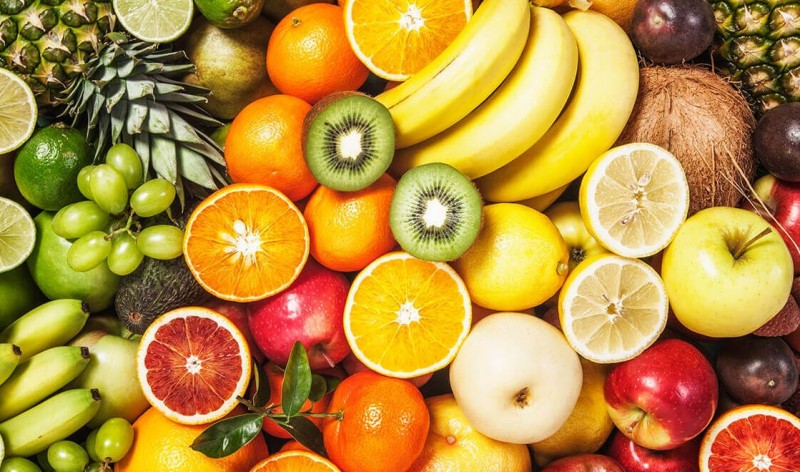
Fruits and vegetables are an essential part of a healthy diet, providing a wide range of vitamins, minerals, and dietary fiber. However, many people are aware of the health benefits of these foods but may not realize that they can also carry various contaminants and pose a risk of infection. Fruits and vegetables can become contaminated through contact with soil, water, or animals during cultivation. Moreover, they can pick up various pesticides and chemicals used in agriculture. If not cleaned thoroughly, they can carry the risk of infections and diseases.
Cleaning and handling fruits and vegetables properly is crucial to minimize these risks. While people employ various methods to wash their produce, it's essential to follow guidelines recommended by agencies like the U.S. Food and Drug Administration (FDA) to ensure safety. This article will explore the importance of cleaning and handling fruits and vegetables correctly and provide tips on doing so effectively.
The Risks of Contamination
Fruits and vegetables are vulnerable to contamination from various sources throughout their journey from farm to table. Here are some common ways produce can become contaminated:
Soil and Environmental Contaminants: Fruits and vegetables grow in the soil, making them susceptible to soil-borne contaminants like bacteria and parasites. These contaminants can adhere to the produce's surface and pose a health risk if not removed.
Water Contamination: Irrigation water and rain can carry harmful microorganisms, chemicals, and pollutants, which can come into contact with the produce. Contaminated water sources can lead to the contamination of fruits and vegetables.
Handling and Packaging: During harvesting, packaging, and transportation, fruits and vegetables can be handled by various individuals and may come into contact with dirty hands, equipment, or packaging materials. This can introduce contaminants to the produce.
Pesticides and Chemical Residues: Agricultural practices often involve the use of pesticides and chemicals to protect crops from pests and diseases. Residues of these chemicals can remain on the surface of fruits and vegetables.
Cleaning and Handling Guidelines
To reduce the risk of consuming contaminated produce, it's important to follow proper cleaning and handling practices. Here are some guidelines to consider:
Washing with Cold Water: The FDA recommends washing fruits and vegetables under cold, running water. This helps remove dirt, debris, and surface contaminants effectively. Do not use soap, bleach, or detergent, as they can leave harmful residues on the produce.
Use a Soft Brush: For produce with thicker skins or surfaces that are difficult to clean with just water, such as potatoes or melons, use a soft brush to gently scrub away dirt and contaminants. Be sure to rinse thoroughly afterward.
Vinegar Solution: Some studies suggest that using a vinegar solution (a mixture of water and vinegar) may help reduce pesticide residues and kill some bacteria on fruits and vegetables. To make a vinegar solution, mix one part vinegar with three parts water, and soak the produce for a few minutes before rinsing with cold water.
Remove Outer Layers: Peeling or removing outer layers of certain fruits and vegetables, such as apples, cucumbers, and carrots, can reduce the risk of consuming contaminants. However, this may also remove some of the nutrients and fiber, so it's a trade-off.
Proper Storage: After cleaning, it's important to store fruits and vegetables properly to maintain their freshness and reduce the risk of contamination. Store them away from raw meat, seafood, and eggs to prevent cross-contamination. Use clean, separate cutting boards for produce and meats.
Refrigeration: Store perishable fruits and vegetables in the refrigerator at the appropriate temperature. Refrigeration slows the growth of bacteria and helps maintain freshness. Be mindful of the specific storage requirements for different types of produce.
Avoid Cross-Contamination: When preparing fruits and vegetables, use clean utensils and cutting boards. Wash your hands thoroughly before and after handling produce, especially if you've been handling raw meat or poultry.
Fruits and vegetables are an essential part of a healthy diet, but they can carry the risk of contamination if not cleaned and handled properly. Contaminants such as bacteria, pesticides, and chemicals can pose health risks if ingested. To minimize these risks, it's crucial to follow recommended guidelines for cleaning and handling produce. Washing produce with cold, running water and using a soft brush when needed can effectively remove contaminants. Vinegar solutions may provide an additional layer of protection against some pesticides and bacteria. Removing outer layers or peeling certain fruits and vegetables can also reduce the risk of contamination, but it may sacrifice some nutritional value. Proper storage and refrigeration are essential to maintain the freshness of fruits and vegetables and prevent contamination. Additionally, practicing good food safety habits, such as avoiding cross-contamination and washing hands thoroughly, is essential when handling produce.
By following these guidelines, individuals can enjoy the health benefits of fruits and vegetables while minimizing the potential risks associated with contamination. Making informed choices about cleaning and handling produce is a crucial step in maintaining a healthy and safe diet.
Your Body's Defense: 10 Ways to Boost Glutathione and Defeat Oxidative Stress